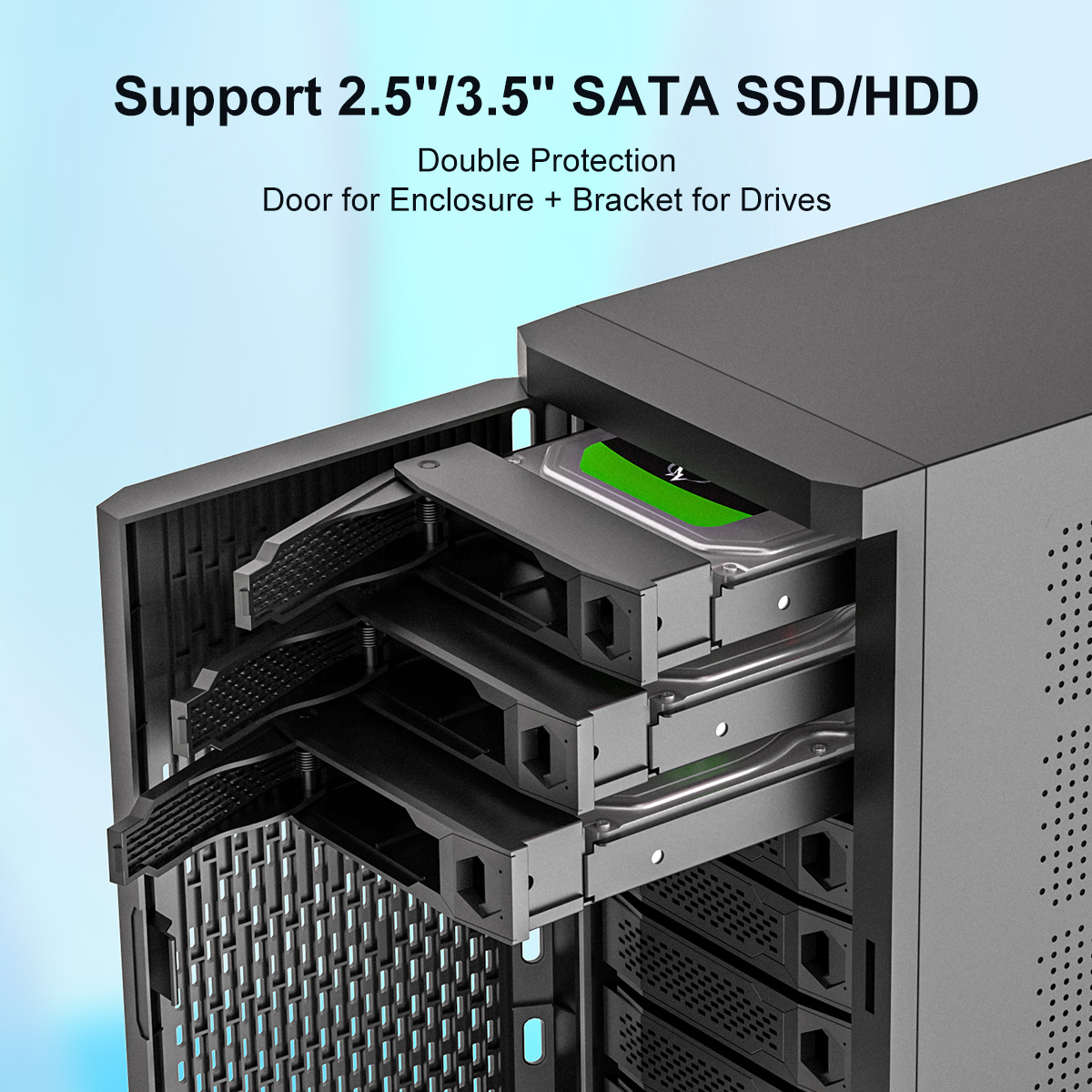With the ever-increasing amount of data generated in today's digital era, the need for scalable data storage solutions has become paramount. In this context, 8 Bay Raid Enclosures have emerged as a potential game-changer. This article delves into the intricacies of 8 Bay Raid Enclosures, exploring their features, benefits, and the role they play in scaling storage capacity efficiently.
An 8 Bay Raid Enclosure refers to a storage solution that can accommodate up to eight hard disk drives or solid-state drives (SSDs) in a single unit. These enclosures come equipped with various RAID (Redundant Array of Independent Disks) configurations, enabling users to enhance performance, data management, and data protection.
Typically, an 8 Bay Raid Enclosure consists of a combination of hardware components and software features. The hardware comprises of a chassis, power supply units, drive bays, and cooling systems, ensuring optimal disk performance and temperature regulation. On the software front, these enclosures provide RAID controllers, enabling users to configure and manage different RAID levels, such as RAID 0, RAID 1, RAID 5, or RAID 6, according to their specific needs.
1. Scalability: 8 Bay Raid Enclosures provide a scalable storage solution by allowing users to add or replace drives as needed. This flexibility enables organizations to start with a smaller storage capacity and expand it over time, keeping pace with their changing data requirements. Additionally, the hot-swappable drive bays offered by these enclosures facilitate easy drive replacement without disrupting system operations.
2. Performance Boost: With RAID configurations, 8 Bay Raid Enclosures offer improved performance compared to traditional storage setups. Using RAID 0, for instance, users can harness the power of striping to enhance data transfer rates by spreading data across multiple drives. RAID 5 and RAID 6 configurations bring additional advantages such as data redundancy and error recovery, ensuring data integrity even in the event of a drive failure.
3. Data Protection: Built-in redundancy mechanisms in 8 Bay Raid Enclosures contribute to better data protection. RAID configurations distribute data across multiple drives, allowing for data recovery in case of drive failure. Coupled with features like automatic rebuild and hot spare support, these enclosures minimize the risk of data loss and ensure business continuity.

As data storage requirements continue to surge, 8 Bay Raid Enclosures offer a compelling solution for seamless scalability. This storage technology provides organizations with the flexibility to expand their storage capacity gradually, ensuring optimal performance and data protection. By leveraging the advantages of these enclosures, businesses can lay a robust foundation for managing their growing data needs effectively.